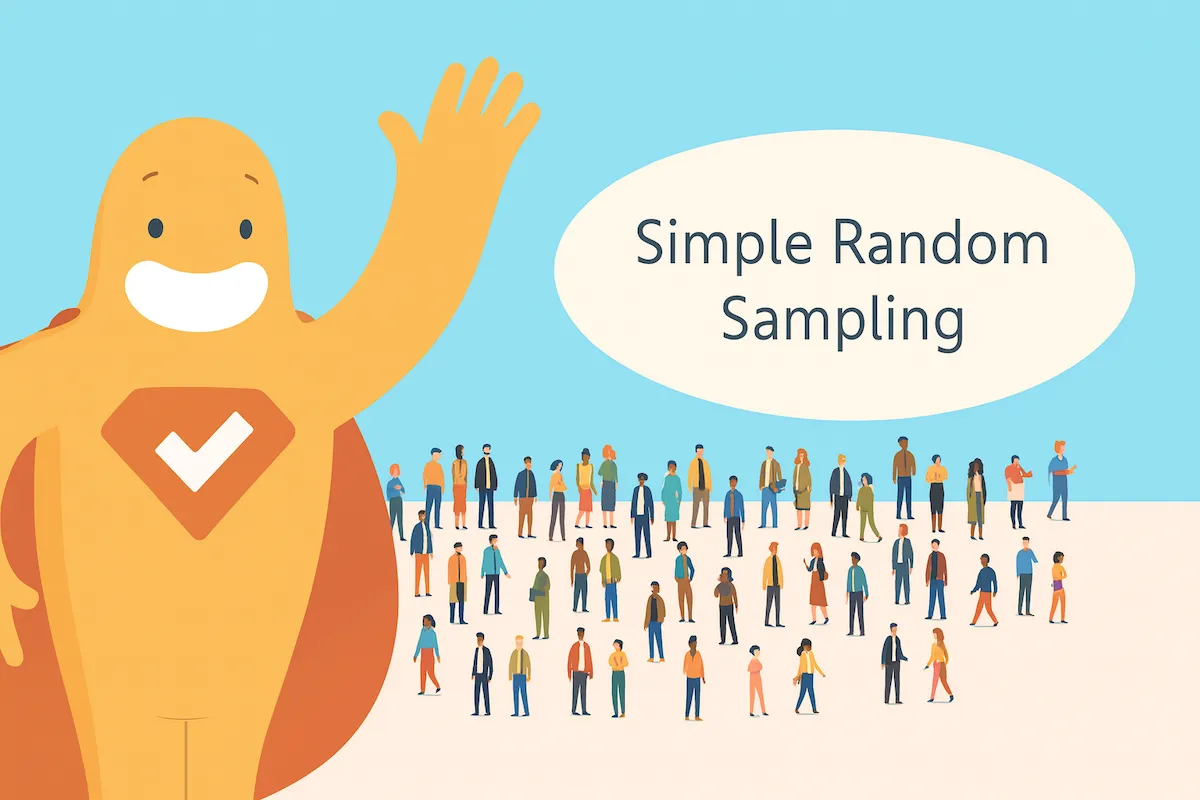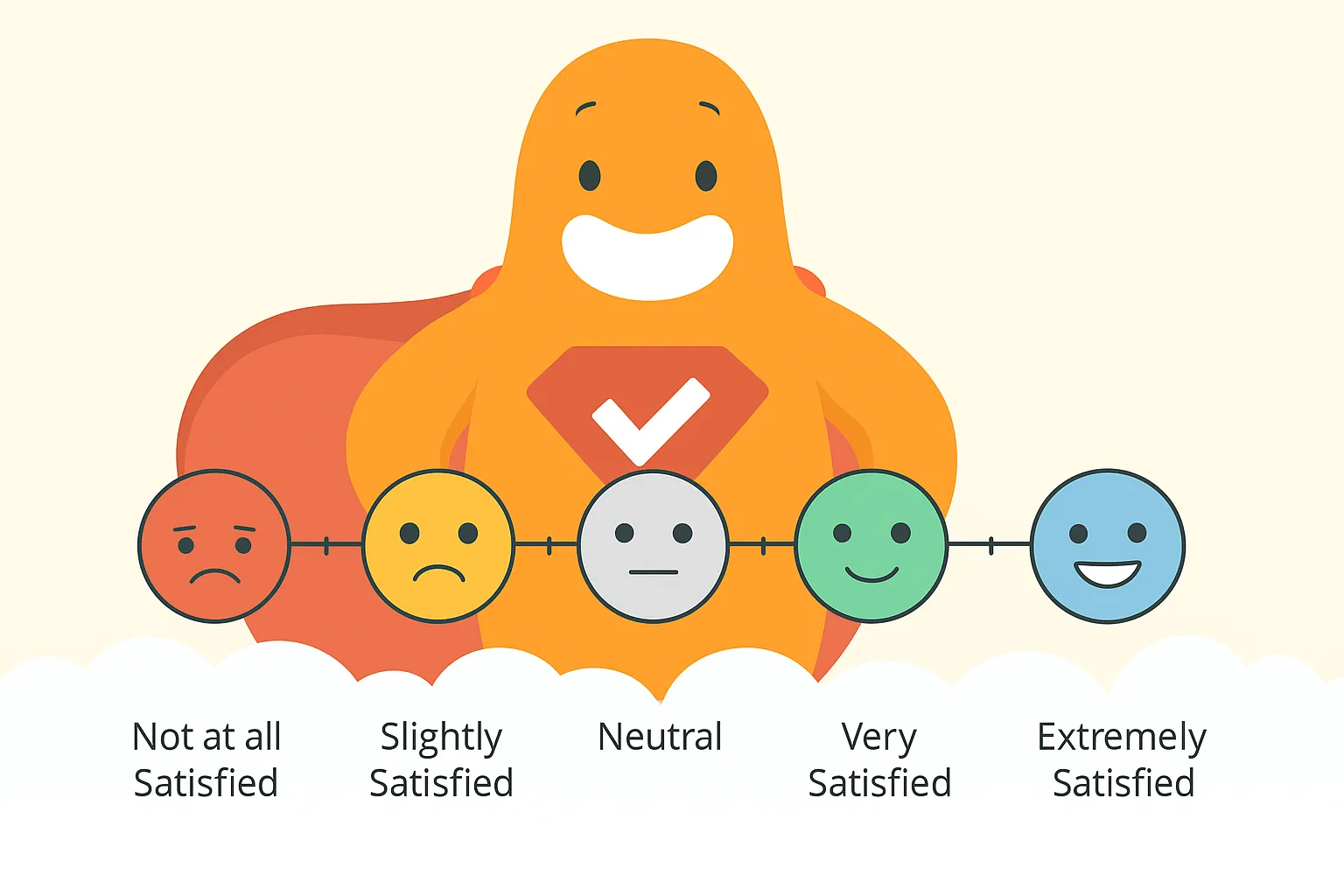Creating a fun survey is key to boosting engagement and increasing response rates. This guide explores how to make surveys enjoyable through visual appeal, humor, conversational tone, and incentives. It emphasizes understanding your audience, using varied question formats, and incorporating playful, relatable prompts like “What’s your go-to karaoke song?” or “What superpower would you choose?” The article also outlines eight strategies for engagement—from design and humor to sharing results—and warns against common pitfalls like long or repetitive surveys. By blending creativity, interactivity, and brevity, fun surveys turn data collection into an enjoyable experience that improves both participation and feedback quality.
Surveys are a great way to gather research and information from the general public or a specific target audience. Polling and questionnaire methods are especially effective for collecting data in a structured and engaging way. The results can be used to validate or debunk theories, inform business decisions, and improve products and/or the customer or employee experience.
Create your fun survey, poll, or questionnaire now!
Of course, a survey is only as good as its results, and studies show that the average response rate for surveys is just 10–30%. If the majority of respondents don’t take the time to complete the survey, results can be skewed, leading to poor theses and bad decision-making. So, how do you ensure people will spend time with your survey? By making it a fun survey! Using engaging questions is key to increasing participation and boosting response rates.
Collecting opinions and encouraging respondents to share their opinions can significantly improve the quality and authenticity of your survey feedback.
Including interesting survey questions helps keep respondents interested and reduces survey fatigue, making the experience enjoyable and more effective.
Create your fun survey, poll, or questionnaire now!
Understanding Your Audience
Before you dive into creating fun surveys, it’s essential to get to know your target audience. Understanding who will be answering your questions helps you tailor your survey to their interests, making it more engaging and enjoyable. For example, if your audience is made up of young adults, you might include fun poll questions about pop culture trends, favorite childhood memories, or dream jobs. If you’re surveying professionals in the workplace, thought-provoking questions about their industry or daily routines can spark interesting conversations.
The key is to create surveys that feel relevant and personal. Try using fun questions like, “What’s your go-to karaoke song?” or “What’s the most unusual food you’ve ever tried?” These types of questions not only break the ice but also encourage respondents to share a bit about themselves, making the survey experience more enjoyable. By focusing on your audience’s preferences and backgrounds, you’ll be able to craft fun surveys that people actually want to answer—and maybe even share with their friends or colleagues!
Create your fun survey, poll, or questionnaire now!
Question Types and Formats
The types of questions and formats you use can make all the difference in keeping your surveys fun and engaging. Multiple-choice questions are a classic choice for fun poll questions like, “What’s your favorite holiday?” or “Which dessert could you eat every day?” These quick, easy-to-answer questions keep the pace lively and encourage more responses.
Open-ended questions are perfect for gathering unique insights and stories. Try asking, “What’s your favorite way to spend a break?” or “What’s the best joke you’ve heard recently?” These questions invite creativity and can lead to some truly memorable answers.
To make your surveys even more enjoyable, consider adding interactive elements like quizzes, games, or challenges. Questions such as, “If you could have one superpower, what would it be?” or “Which movie character do you most identify with?” add a playful touch and help your survey stand out. Mixing up your question types and formats not only keeps things interesting but also encourages more thoughtful and enthusiastic participation from your audience.
8 Ways to Create Fun Survey Questions
So how do you make a fun online survey, especially if the topic is pretty dry? There are a number of ways to engage people with surveys, and in this article, we’ll share creative ideas for making your surveys and polls more engaging and enjoyable. Even if you don’t have any particularly “fun questions to ask,” you can use activities like fun polls to energize participants and foster a lively atmosphere. There are also several strategies to encourage more people to participate in your survey, helping you boost response rates. Remember, the engagement and involvement of participants play a key role in making your survey successful. Here’s our top eight ways to make a fun survey online.
1. Use Visual Appeal
Studies show that humans are 90% visual beings, processing visuals 60,000 times faster than text. So, while you want respondents to read your questions, they’re more likely to do so if the survey or form has eye appeal! This could mean using a template with an attractive or fun background, including images that sync up with the questions, or choosing a nice-looking font. Learn more about photo surveys and polls with pictures.
Another way to make your survey visually appealing is to make it responsive. With responsive design, your surveys will render on any device or screen, regardless of size. To account for the size of the screen, elements on the page will automatically rearrange themselves, shrink, or expand as necessary. Otherwise, images and text can be cut off on mobile devices, and there’s nothing fun about that!
2. Be Funny
This may seem like a no-brainer: Make a survey fun by being funny! Of course, certain professional surveys and surveys surrounding serious topics should not tickle the funny bone. However, when humor fits within the context of your survey, put it to use to create engaging survey questions! This could mean humorously wording your questions—such as asking about someone’s favorite food as a lighthearted opener—creating fun survey questions, including funny GIFs, and more.
Try adding funny poll questions like “What’s the weirdest thing you’ve ever eaten?” or “If you could have any superpower at work, what would it be?” to boost engagement and make your survey more enjoyable. Including fun facts throughout your survey can also make the experience more entertaining and memorable for respondents.
Create your fun survey, poll, or questionnaire now!
3. Be Conversational
While personalization may not be “fun,” per se, it can certainly make the survey-taking experience much more enjoyable. Creating a conversational survey can foster engaging interactions with respondents, making them feel more involved and valued. So, if you know who your audience is, direct the messaging to them. Fun and interactive surveys can start conversations, encourage people to talk, and share their thoughts, helping to break the ice and build a sense of community.
It also helps to be sincere, building a respectful, loyal relationship with respondents (especially if they’re already your customers). So while your survey can be fun, colorful, and interesting, it should also include an “ask” at the start in which you sincerely request respondents to take the time to complete the survey and explain how their input helps you (and benefits them, if applicable).
4. Use Multiple Channels
The majority of online surveys arrive in a respondent’s email inbox. But what if they ignore it or aren’t too keen on email? Make your survey more fun and accessible by offering the ability to take it on multiple channels. One thing that can really pique the interest of potential respondents is if they “run into you” all over the internet! Consider posting your survey to relevant marketing pages, sending it out via social media channels, or delivering it through SMS texting. You can also embed your survey directly on your website, making it easy for visitors to participate and for you to collect feedback right where your audience already engages with your brand. By the second or third time someone sees your survey, they’re likely to be curious and give it their time.
5. Offer Incentives
Most people responding to surveys like to be helpful, are invested in the topic, or want their voice to be heard. Others need an incentive – some sort of prize or reward provided upon completion of the survey. Often, the incentive is financial; it could be a gift card or a discount on a product. Let’s face it—the knowledge that you’ll get a $10 Starbucks gift card just for answering a few questions makes for a fun survey! Read more about the pros and cons of survey incentives.
6. Show Results
Studies show that about 10% of our thoughts involve comparisons of some kind. Social comparison theory, developed in 1954 by psychologist Leon Festinger, states that people determine their own social and personal worth based on how they stack up against others. So, be sure to share the results of the survey after a respondent has completed it so they can see how their answers compare to other survey-takers. Just be sure to keep the results anonymous to protect everyone’s privacy.
Create your fun survey, poll, or questionnaire now!
7. Offer Sharing
Along with wanting to see the results of other respondents, people like to share with others, too. So, unless you’re targeting a very specific audience and don’t want random responses from unvetted people, you should give respondents the option to share the results of their survey on social media (or just a link to your survey). Bonus: This can garner you even more respondents—at no cost to you!
8. Keep It Short
Unless a respondent is truly invested in a survey or its results, they’re unlikely to commit to a lengthy survey, especially without an incentive. However, most people—without any sort of incentive—will commit to a short survey if it will take them five minutes or less (some may even welcome the break from normal activities). So, be sure to whittle your survey down to only the most urgent questions, and avoid asking repetitive or redundant ones. You want to show respondents that you respect their time. You might also use multiple-choice questions or a Likert scale to make questions easier to answer. Read more about short surveys in our blog on microsurveys.
Measuring Survey Success
Once you’ve created your fun survey, it’s important to measure how well it’s working. Keep an eye on metrics like response rates, completion rates, and the quality of feedback you receive. If you notice that certain fun questions or formats are getting more responses, use that insight to shape your future surveys.
Don’t be afraid to ask for feedback directly—questions like, “What did you think of this survey?” or “How can we make our surveys more enjoyable?” can provide valuable information for improvement. You can also keep things light by including fun questions such as, “What’s your favorite season?” or “How many cups of coffee do you drink in a day?” These not only entertain your respondents but also help you gauge engagement.
By regularly reviewing your survey’s performance and listening to your audience, you’ll be able to create surveys that are not only fun but also effective in gathering the data you need.
Create your fun survey, poll, or questionnaire now!
Common Mistakes to Avoid
Even the most well-intentioned fun surveys can fall flat if you’re not careful. One common mistake is making your survey too long or repetitive, which can quickly turn an enjoyable experience into a chore. Keep your surveys concise and focused, and always prioritize the most interesting and relevant questions.
Another pitfall is using unclear language or failing to provide enough context for your questions. Make sure your instructions are straightforward, and consider giving examples to help respondents understand what you’re asking. Avoid jargon or technical terms that might confuse your audience—remember, the goal is to make your surveys as accessible and engaging as possible.
To keep things fresh, sprinkle in fun questions like, “What’s your favorite way to start the day?” or “What’s the best thing that’s happened to you this week?” These types of questions not only make your surveys more enjoyable but also encourage more thoughtful and enthusiastic responses. By steering clear of these common mistakes, you’ll be well on your way to creating surveys that your audience will actually look forward to answering!
Create your fun survey, poll, or questionnaire now!
Conclusion
If you want a survey that gets results, it helps to make a fun online survey. All the above information can be used to create more engaging and effective surveys that capture attention and encourage participation. While not all surveys should aim for laughs, especially if they’re focused on serious subjects, fun survey questions, design, placement, and more can help if the topic is right for it.
Remember, fun surveys can still help you achieve your important research goals while making the experience enjoyable for respondents. By relating questions to different aspects of life and tapping into topics that resonate with people around the world, you can foster deeper connections and gather more meaningful insights. Are you ready to create your next fun survey? Try SurveyLegend for free! We have dozens of fun-looking, pre-designed templates that are responsive, secure, and sure to get attention.
Create your fun survey, poll, or questionnaire now!
Frequently Asked Questions (FAQs)
What is responsive design in surveys?
Responsive design enables surveys to display on any device or screen by adjusting elements on the page, automatically rearranging, shrinking, or expanding to fit the format.
What is the social comparison theory?
This theory was developed in 1954 by psychologist Leon Festinger. It states that people determine their own social and personal worth based on how they compare to others.
How do you create a fun survey?
You can make surveys more fun by using colors, images, and appealing fonts. Incorporate play into your surveys by adding interactive elements and lighthearted questions. Use icebreaker questions, such as “What was your favorite stuffed animal as a child?” or include team-building games like ‘Two Truths and a Lie’ to encourage respondents to share quirky facts about themselves. For example, someone might say, “I once won a dance contest, I have a pet iguana, and I still sleep with my childhood stuffed animal.” These activities help foster connections and make the survey experience more engaging.
Other ways to make a survey fun include offering incentives, sharing abilities, and results. If you’re conducting employee surveys, consider including questions about job satisfaction to better understand how team members feel about their roles and work environment.
Online surveys can also help people stay up to date with trends and pop culture by including questions about the latest celebrity news, viral memes, or music releases.



